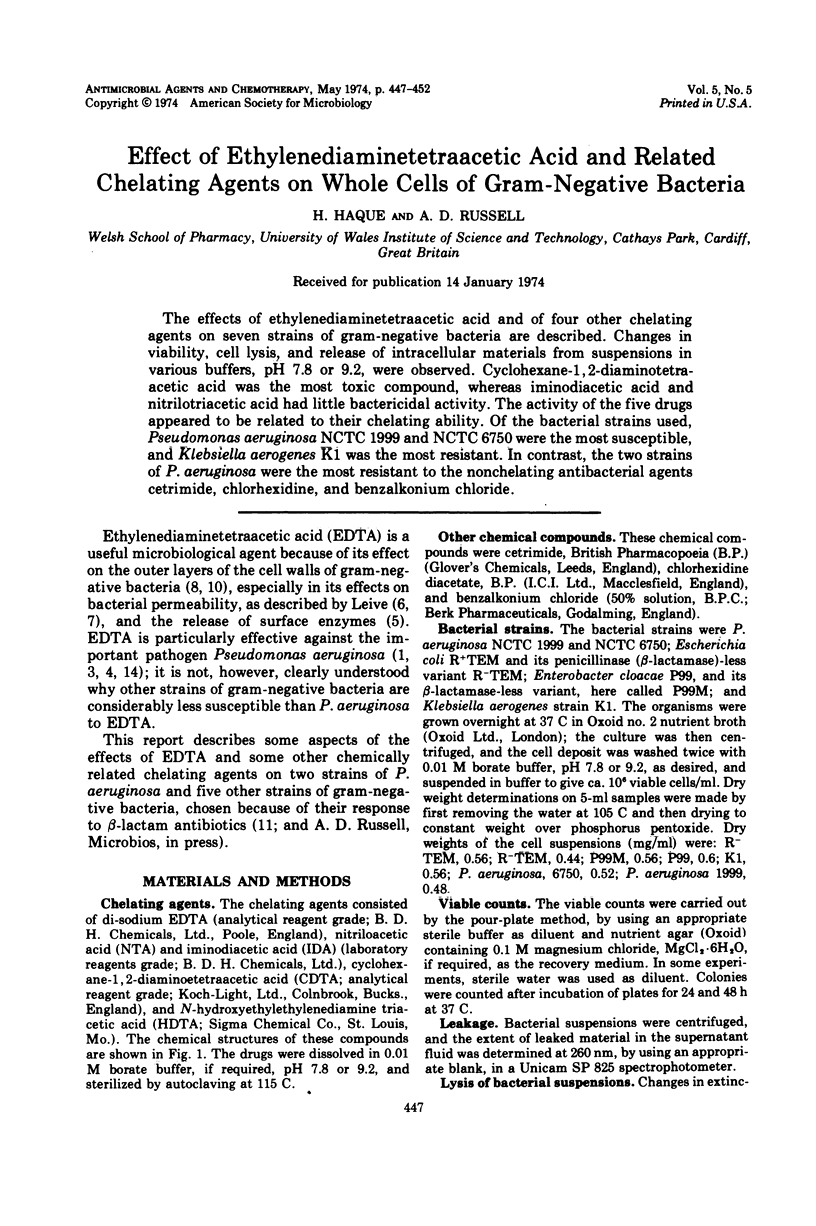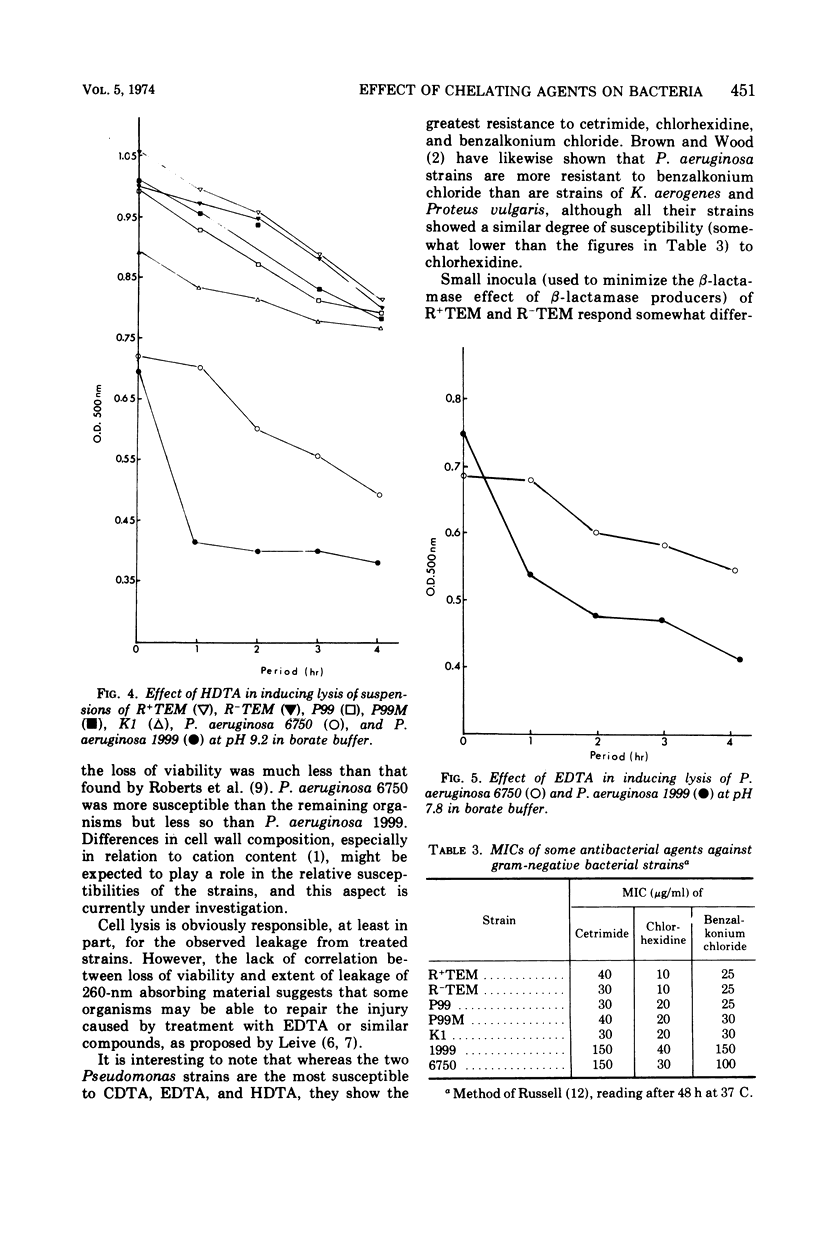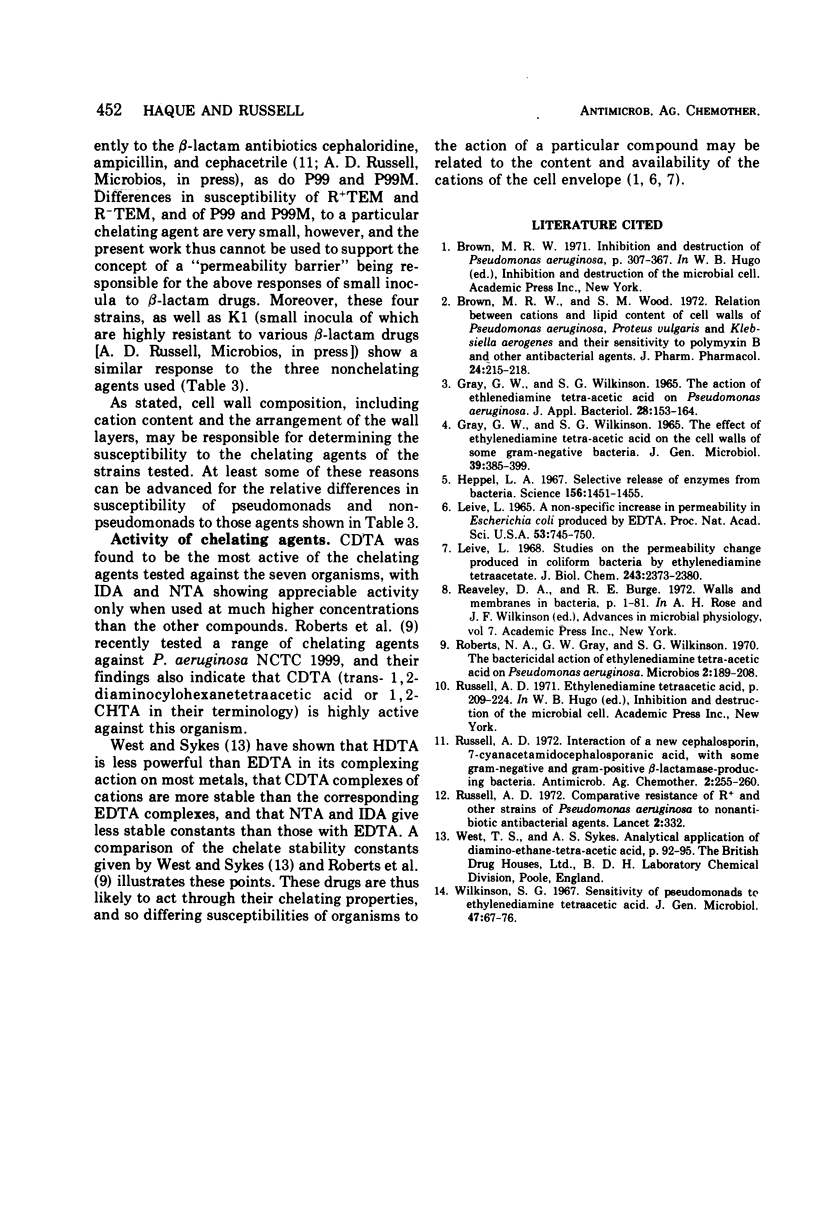Abstract
The effects of ethylenediaminetetraacetic acid and of four other chelating agents on seven strains of gram-negative bacteria are described. Changes in viability, cell lysis, and release of intracellular materials from suspensions in various buffers, pH 7.8 or 9.2, were observed. Cyclohexane-1,2-diaminotetraacetic acid was the most toxic compound, whereas iminodiacetic acid and nitrilotriacetic acid had little bactericidal activity. The activity of the five drugs appeared to be related to their chelating ability. Of the bacterial strains used, Pseudomonas aeruginosa NCTC 1999 and NCTC 6750 were the most susceptible, and Klebsiella aerogenes K1 was the most resistant. In contrast, the two strains of P. aeruginosa were the most resistant to the nonchelating antibacterial agents cetrimide, chlorhexidine, and benzalkonium chloride.
Full text
PDF





Selected References
These references are in PubMed. This may not be the complete list of references from this article.
- Brown M. R., Wood S. M. Relation between cation and lipid content of cell walls of Pseudomonas aeruginosa, Proteus vulgaris and Klebsiella aerogenes and their sensitivity to polymyxin B and other antibacterial agents. J Pharm Pharmacol. 1972 Mar;24(3):215–218. doi: 10.1111/j.2042-7158.1972.tb08967.x. [DOI] [PubMed] [Google Scholar]
- Gray G. W., Wilkinson S. G. The effect of ethylenediaminetetra-acetic acid on the cell walls of some gram-negative bacteria. J Gen Microbiol. 1965 Jun;39(3):385–399. doi: 10.1099/00221287-39-3-385. [DOI] [PubMed] [Google Scholar]
- Heppel L. A. Selective release of enzymes from bacteria. Science. 1967 Jun 16;156(3781):1451–1455. doi: 10.1126/science.156.3781.1451. [DOI] [PubMed] [Google Scholar]
- LEIVE L. A NONSPECIFIC INCREASE IN PERMEABILITY IN ESCHERICHIA COLI PRODUCED BY EDTA. Proc Natl Acad Sci U S A. 1965 Apr;53:745–750. doi: 10.1073/pnas.53.4.745. [DOI] [PMC free article] [PubMed] [Google Scholar]
- Leive L. Studies on the permeability change produced in coliform bacteria by ethylenediaminetetraacetate. J Biol Chem. 1968 May 10;243(9):2373–2380. [PubMed] [Google Scholar]
- Russel A. D. Interaction of a new cephalosporin, 7-cyanacetamidocephalosporanic acid, with some gram-negative and gram-positive beta-lactamase-producing bacteria. Antimicrob Agents Chemother. 1972 Oct;2(4):255–260. doi: 10.1128/aac.2.4.255. [DOI] [PMC free article] [PubMed] [Google Scholar]
- Russell A. D. Comparative resistance of R+ and other strains of Pseudomonas aeruginosa to non-antibiotic antibacterial agents. Lancet. 1972 Aug 12;2(7772):332–332. doi: 10.1016/s0140-6736(72)92938-8. [DOI] [PubMed] [Google Scholar]
- Wilkinson S. G. The sensitivity of pseudomonads to ethylenediaminetetra-acetic acid. J Gen Microbiol. 1967 Apr;47(1):67–76. doi: 10.1099/00221287-47-1-67. [DOI] [PubMed] [Google Scholar]


